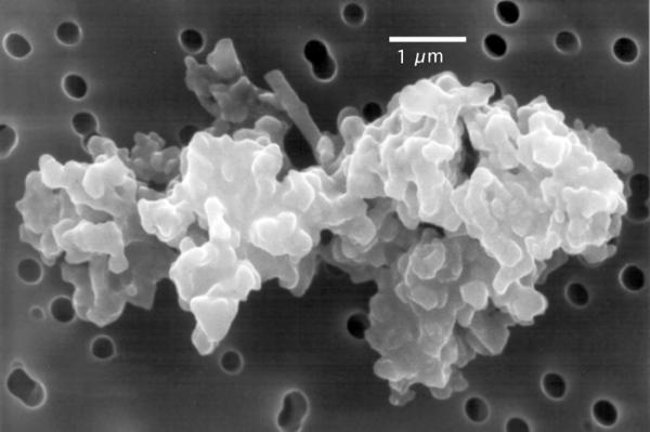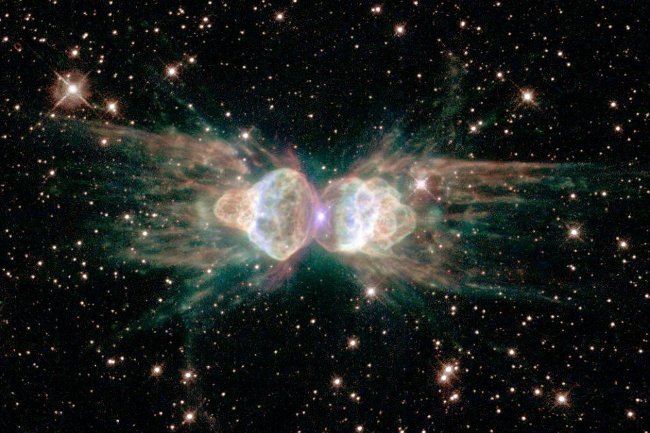Where does the oxygen on Earth come from?
In the first half of Earth 's history there was absolutely no oxygen, but that meant there was no life. There is still much debate about the main biological factors in the " oxygen money " world, researchers are looking for evidence in some of the oldest sedimentary rock layers on our planet.

Most scientists think that the oxygen in the atmosphere is not significant until 2.4 billion years ago, when the Great Oxidation Event (GOE - also known as the Oxygen Disaster). ) happening. The jump in oxygen levels is mainly due to cyanobacteria , also known as blue algae - the photosynthetic bacteria that breathe oxygen.
How this species of oxygen-breathing bacteria appears and appears when it has not been clearly defined, due to the fact that the GOE event is the emergence of dioxy ( O2 ) in the Earth's atmosphere. learn to cause, complex junction of global freezing, mineral volatility and the abundance of new species.
" We do not know what the cause is and what the consequences are. Some events happen at the same time, so the story is still unclear, " said Dr Dominic Papineau at the Carnegie Academy of Washington. know.
To help solve this geographic question, Papineau studied the formation of banded iron formations (BIFs ), sedimentary rocks formed at the bottom of ancient seas.
Papineau's research, supported by NASA's Evolutionary Biology Program , focuses on specific minerals within the formation of iron layers that form BIFs that can be closely related to life ( and death ) of bacteria in ancient times.
Exploiting the formation of iron layers to create BIFs

Iron minerals in BIFs are the largest source of iron ore in the world. However, this stone is more valuable than making steel. Geographers exploited them by recording a rich history that lasted from 3.8 billion to 0.8 billion years ago.
However, the origin of the oldest BIFs is still a mystery. What scientists need is the help of organisms to formulate the current common sense, but which species is it? Unicellular marine creatures do not leave any pieces of bone or shells that we can understand, but Papineau thinks that there may be localized minerals or fossils in BIFs.
He and his colleagues found carbon materials in BIFs closely related to apatite - a mineral that contains phosphorus. This means that what constitutes in BIF lies in their own products.
To verify this, Papineau's team will study the carbon contained in BIF and compare it with other carbon minerals not of biological origin, including those found in a Martian meteorite. .
" This study is capable of demonstrating that microbial biomass is linked and deposited with iron minerals " - Professor Andreas Kappler from Tuebingen University in Germany - who is not involved in the study.
Early occurrence of "oxygen exhalation"

It is possible that the bacteria built in BIF are cyanobacteria , because the oxygen from these bacteria causes iron to oxidize in the seas before the GOE event . But if the cyanobacteria appears before GOE, why does it take hundreds of millions of years for oxygen to accumulate in the atmosphere?
Papineau and his colleagues found part of the answer in the context of complex interactions between biology and geography. Oxygen from cyanobacteria can be destroyed by methane's superiority. These two gases react to each other to produce carbon dioxide and water.
" Oxygen cannot accumulate in methane-rich environments, " Papineau said.
Methane is thought to originate from bacteria called bacteria that produce methane ( methanogens ), release methane after consuming carbon dioxide and hydrogen gas.
In this case, the bacterium that produces methane and cyanobacteria shares the ancient waters, but the methane-producing bacterium prevails - releasing methane, controlling oxygen and warming the planet with a greenhouse effect. However, by the time of the GOE event, these organisms began to disappear and the depletion of methane in the atmosphere filled oxygen from cyanobacteria.
There is no "nickel" to reserve
 Image of methanogen bacteria through electron microscope.
Image of methanogen bacteria through electron microscope.
Connecting the GOE event with the decline of methane-borne bacteria previously mentioned but there is still little evidence to prove the disappearance of Nikel. However, recently, Dr. Papineau and his colleagues reported in the journal Nature : " About 2.7 billion years ago, the concentration of nickel in BIFs was significantly reduced ."
The nickel content in the ocean has dropped by 50% right before the GOE event. This is important because methane-producing bacteria depend on nickel: it is the main material for enzymes to participate in metabolism during methane formation. When the nickel content decreases, it means that the methane-producing bacteria will be " starved ".
The case of nickel scarcity makes the pre-GOE development of cyanobacteria more plausible, but there is still a lot of evidence to prove this.
Kappler believes: " The oldest study of the origin of BIFs can tell us that life develops the ability to breathe out oxygen and thus change the world forever. "
You should read it
- Terrifying scenario if the Earth lost oxygen in 5 seconds?
- Use an oxygen generator or a better oxygen respirator
- Breakthrough: The first discovery of an oxygen molecule outside the Milky Way
- Oxygen Not Included tips for beginners
- Can humans and animals survive without oxygen?
- Athletes for Hex athletes help measure muscle oxygen levels consumed
- The ocean is losing 'breath'
- Lack of oxygen, blood that does not reach the brain in newborns slows growth later
- Top 3 personal oxygen aids at home for families with sick people
- How to measure SpO2 (blood oxygen concentration) on Apple Watch
- Masimo's CEO affirmed: Apple Watch would be better without the blood oxygen measurement feature
- How did an oxygen exchanger through the outer membrane save lives of Covid-19 patients?
May be interested

The top 10 'inventive' scientific inventions that are great

What makes Thomas Edison a genius when he only comes to school for 3 months in his lifetime

Photos on cigarette packs can prevent death

Where did the origins of the male and female symbols come from?

Witnessing other people suffering, illness, death, terrorism can lead to PTSD

Eating mushrooms helps prevent the risk of dementia, Alzheimer's disease






 Terrifying scenario if the Earth lost oxygen in 5 seconds?
Terrifying scenario if the Earth lost oxygen in 5 seconds? Can humans and animals survive without oxygen?
Can humans and animals survive without oxygen? Use an oxygen generator or a better oxygen respirator
Use an oxygen generator or a better oxygen respirator Breakthrough: The first discovery of an oxygen molecule outside the Milky Way
Breakthrough: The first discovery of an oxygen molecule outside the Milky Way Oxygen Not Included tips for beginners
Oxygen Not Included tips for beginners The Earth used to be purple and 8 secrets of little surprise
The Earth used to be purple and 8 secrets of little surprise